

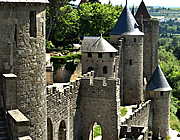
A very hot few days spent exploring some wonderfully well-preserved Roman remains as well as the medieval city of Carcassonne and a lovely walk around four castles deep in the countryside.
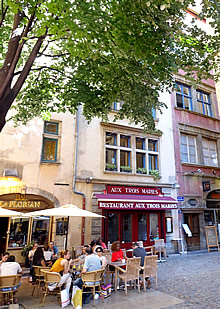
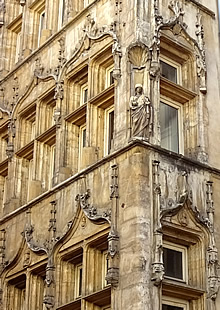
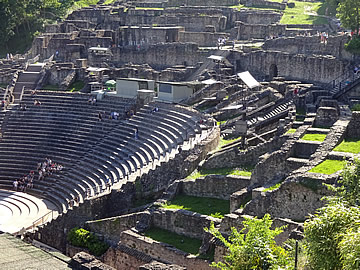
It was more like the height of summer when we arrived in Lyons - boiling hot and not the best for wandering city streets. Having said that, it is a lovely city and we did spend an afternoon in the old town and taking the funicular up to the basilica. There are plenty of cafes for refreshments along the way.
The city was founded by the Romans at the confluence of the rivers Rhône and Saône - an important location for communications and trade.
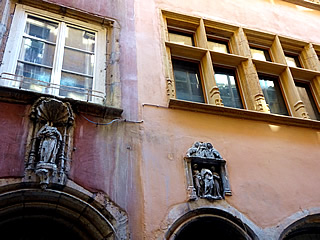
Beautiful warm stone walls abound in the medieval buildings in the old town, here and there more flamboyant Renaissance decoration. An interesting feature are the traboules - covered passageways and winding staircases that allowed quick routes across Vieux Lyon where most streets run parallel to the River Saône. Dating from the 4th century they were first used to allow inhabitants to transport water from the Saône to their homes. Later silk workers used them as the shortest routes to carry their heavy loads.1
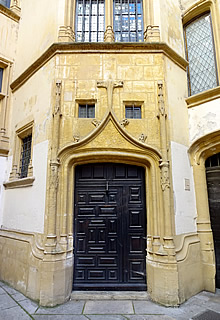
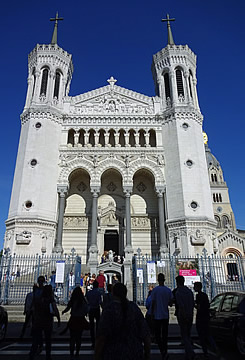
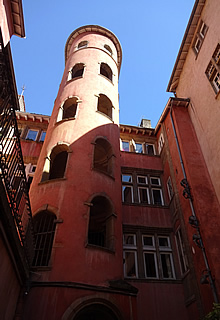
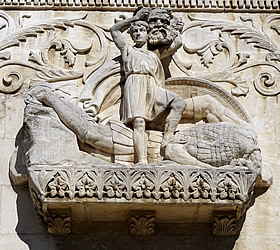
The Basilica of Notre-Dame de Fourvière stands on the Fourvière hill high above the city. It's a gleaming white 19th century building partly Romanesque in inspiration.
Inside the basilica six wall mosaics are dedicated to the Virgin Mary and who is credited with saving the city from the Black Death in the 17th century.2
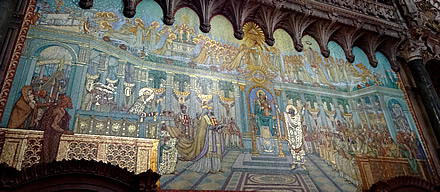
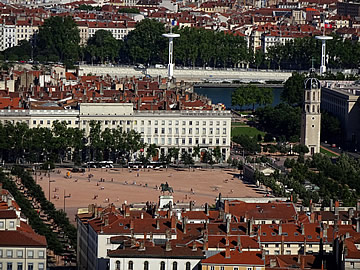
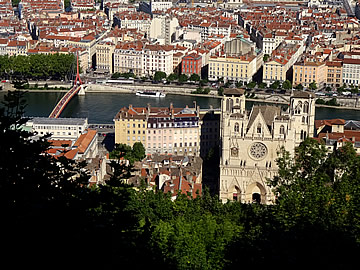
There is a tremendous view over the city from the esplanade here.
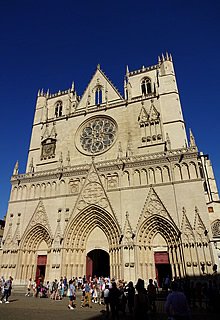
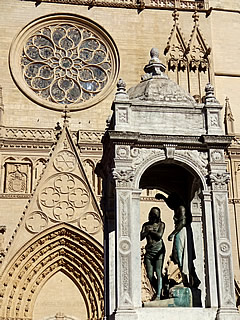
Lyon has reputation as a gastronomic destination exemplified in the bouchons, typically small restaurants serving food from the cheaper cuts of meat such as pig's head, trotters, livers, and tripe. On the menu you might find andouillette - a tripe sausage, fromage de tête - cold terrine of pig's head flesh, blood sausage, tripe and onions, pot au feu. There's not a lot here that would be our first choice on a menu!
The one evening we ate in Lyons we chose Brasserie Le Nord but couldn't honestly say that it was significantly better than many other restaurants we'd eaten in. The jambon Serrano and saucisson brioche ( a local dish) were good, but the Poulet de Bresse which we were expecting to be outstanding was not. A fondant au chocolat pudding was superb, however!
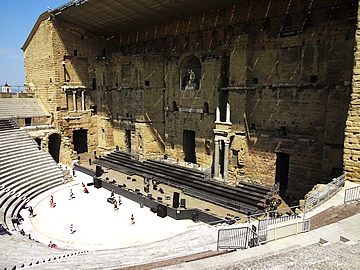
From Lyons we drove to Carcassonne, stopping at Orange to have lunch and to see the celebrated Roman theatre. It was built when Augustus was emperor in the first century so it's getting on for 2000 years old, probably the best preserved Roman theatre anywhere. It's also huge - 9000 people could watch plays here.

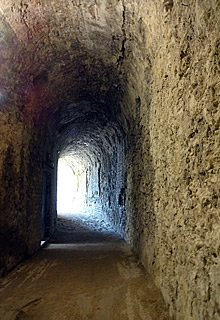
On the north side of the town is a first century Roman arch with reliefs carved on military themes. The arch commemorates the Gallic Wars of Julius Caesar and his Second Legion whose veterans settled here and founded the city. It also commemorates the victories in the Rhineland of Germanicus, a Roman general who was the adopted son of his uncle, the Emperor Tiberius who succeeded Augustus.
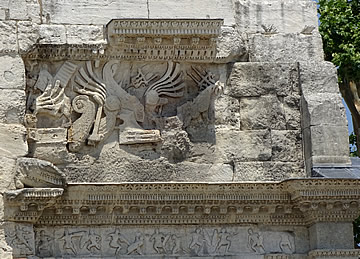
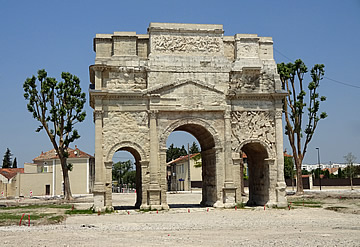

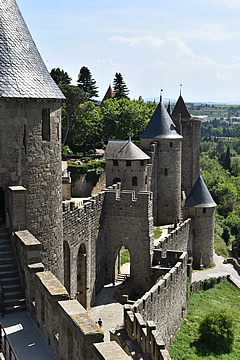
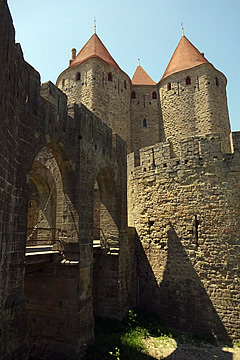
Romans, Visigoths, Saracens, Francs - all occupied this site in its turbulent history, the town was even besieged early in the thirteenth century during Pope Innocent III's crusade against the Cathars. The medieval fortress town we see today dates mostly from the twelfth and thirteenth centuries with restoration after a period of decline in the nineteenth century.
Andrew and I had both visited Carcassonne many years ago and noticed significant changes in the intervening years. In the eighties there were very few tourists and no tacky stalls. Now the place is heaving, several million visitors a year traipse through the gates, and the horrible tourist tat is everywhere, especially on the main street. However, the ramparts are free of commercial activity as are the smaller streets further away from the main drag
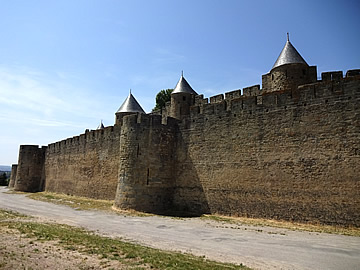
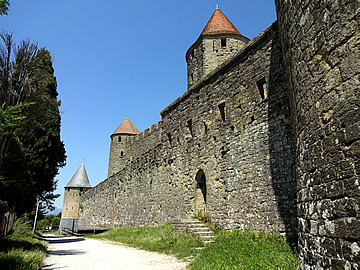
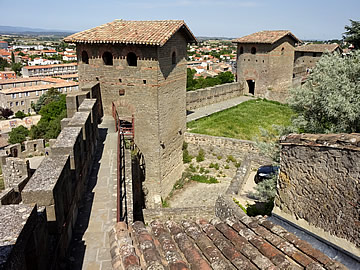 North part of the inner rampart with Roman towers.
North part of the inner rampart with Roman towers.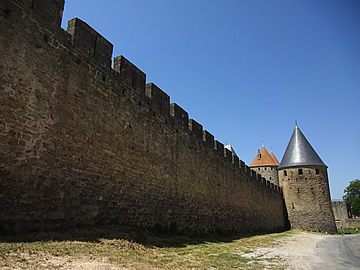
The fortress is encircled by two ramparts. The outer rampart was constructed in the thirteenth century and the space between the two levelled to create tilt yards where jousts could be held.
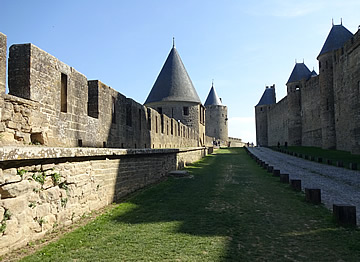
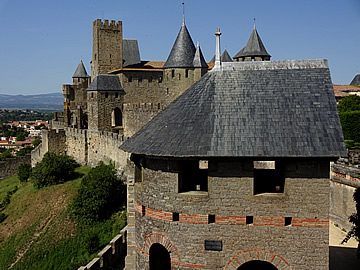
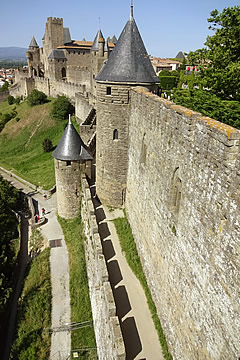
The Comtal Chateau on the west side of the Cité de Carcassonne was built in the twelfth century by the Trencavel family, Viscounts of Carcassonne. Over succeeding centuries fortifications were added including its own curtain wall with towers and a small castle at the entrance.
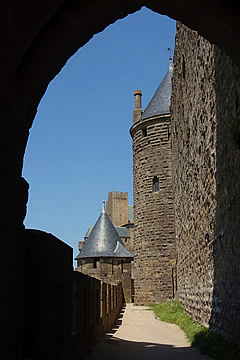
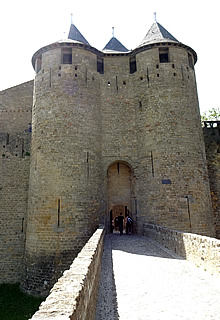
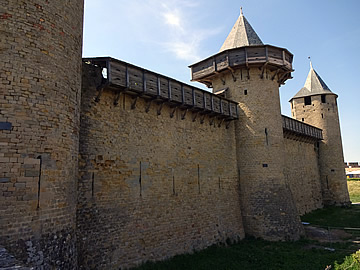
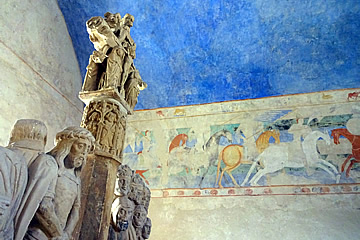
Entrance to the chateau also affords access to the ramparts.
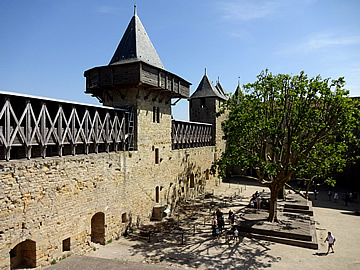
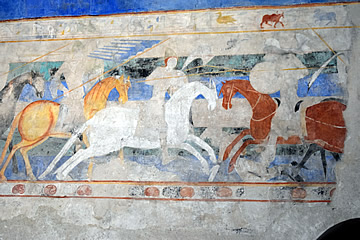
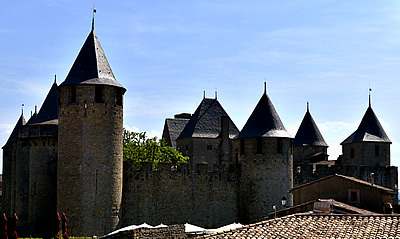
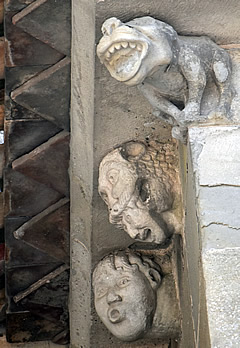
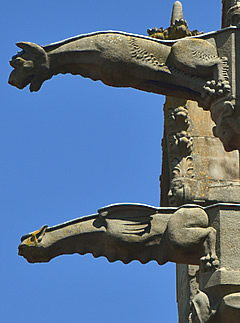
The Basilica of St. Nazaire spans Romanesque and Gothic architecture - it has some wonderful gargoyles and carved grotesques.
We had a very good meal at La Marquiere, a restaurant situated within the ramparts. We were seated in their lovely sunken walled courtyard and had superb lamb followed by a gorgeous chocolate dessert.
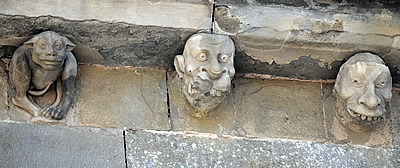
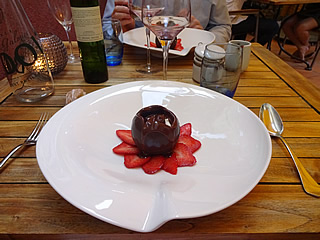
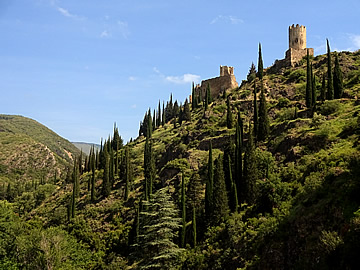
We had a great walk around these four castles about 18 km north of Carcassonne. Three of the castles - Cabaret, Surdespine and Quertinheux - existed in the eleventh century, though not in exactly the same places as today. The Cabaret family are first mentioned around this time, wealthy from exploiting the iron ore deposits in the area.
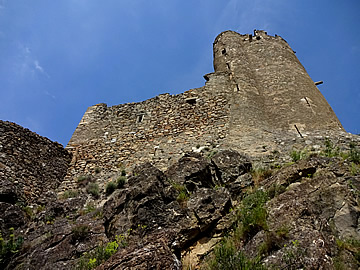
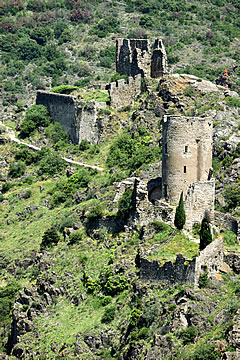
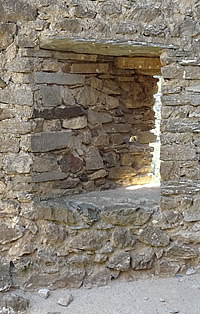
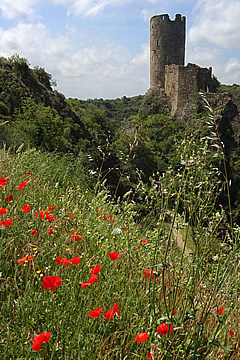
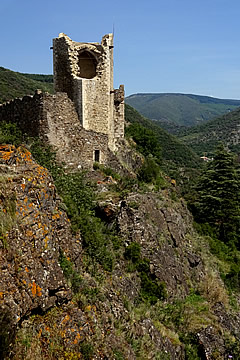
The Cathar religion thrived here and the castles and medieval village suffered attacks in the same crusade of Innocent III as Carcassonne did. They held out for years against Simon de Montfort's crusaders but eventually surrendered in 1227 to Humbert de Beaujeu who had besieged Cabaret.
The village and the castles were destroyed by the royal troops at the end of the Crusade. The castles were then rebuilt along the ridge and the king had a fourth built, the Tour Régine.
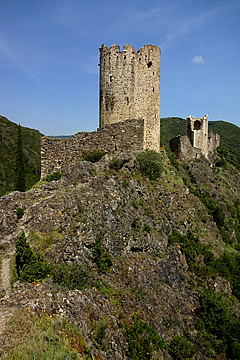
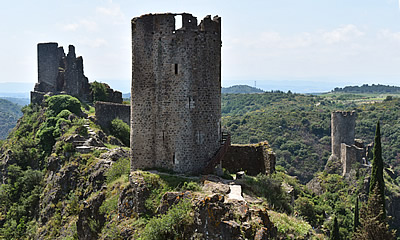
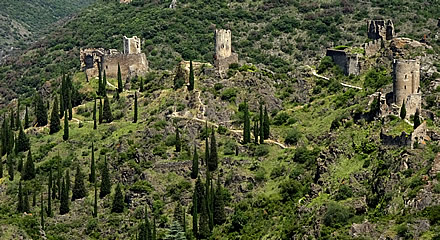
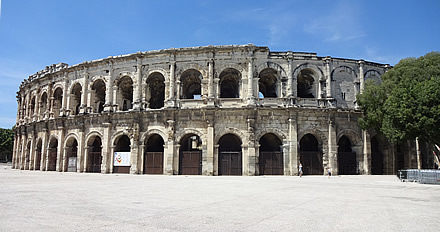
Our final stay on this short break was in Nimes with more amazing Roman remains, in particular the amphitheatre. The publicity literature describes it as "the best-preserved amphitheatre in the world" and it's hard to argue.
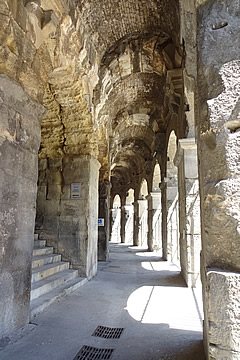
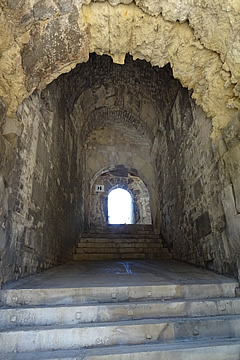
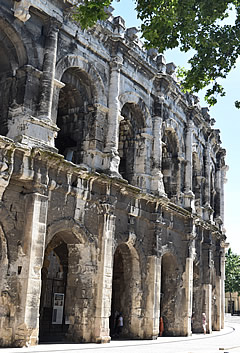
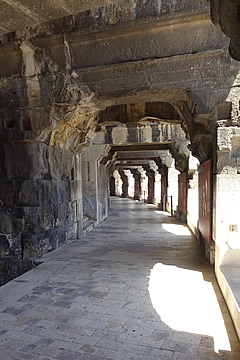
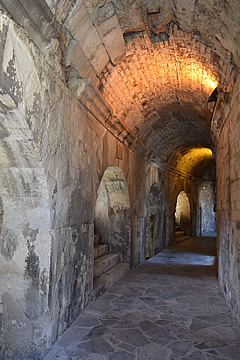
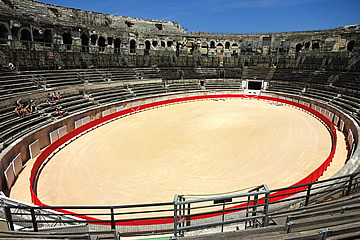
The remarkably complete Maison Carrée, a two thousand year old Roman temple, can be found not too far from the arena. It was dedicated to Gaius and Lucius Caesar, grandsons and heirs to Augustus, who both died young.
We watched a short film inside the temple which tells the story of the founding of Nimes.
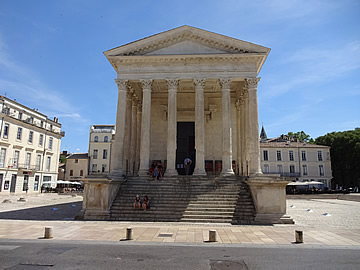
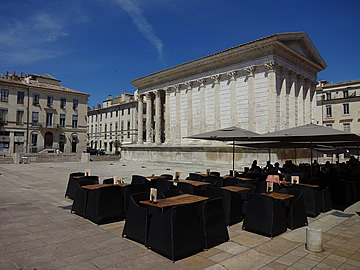
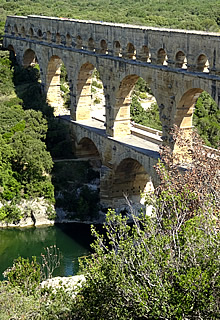
Outside of Nimes, to the north, is an amazingly well-preserved piece of Roman engineering. The Pont du Gard is almost two thousand years old.
A three-tiered Roman bridge, 50m high, spanning the River Gardon, it was part of a 50km long aqueduct supplying the city of Nimes with water.3
The water flowed along a channel in the top of the highest tier of the bridge. You can walk across the lower of the three levels and go down to the river to see it from a different aspect, or climb higher up from the river on both sides of the bridge.
